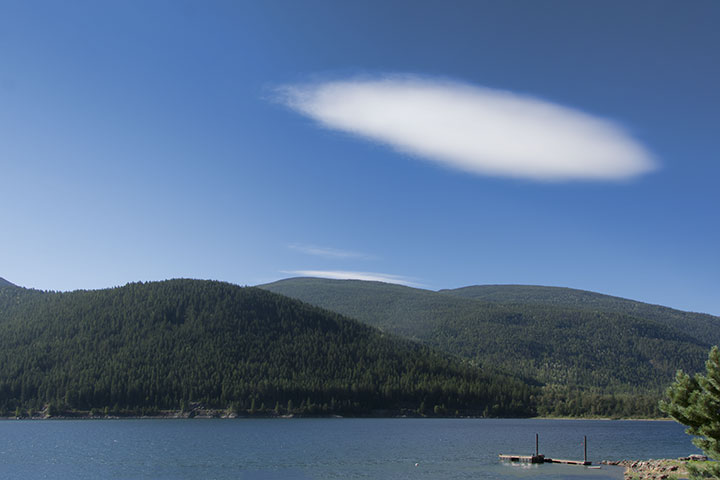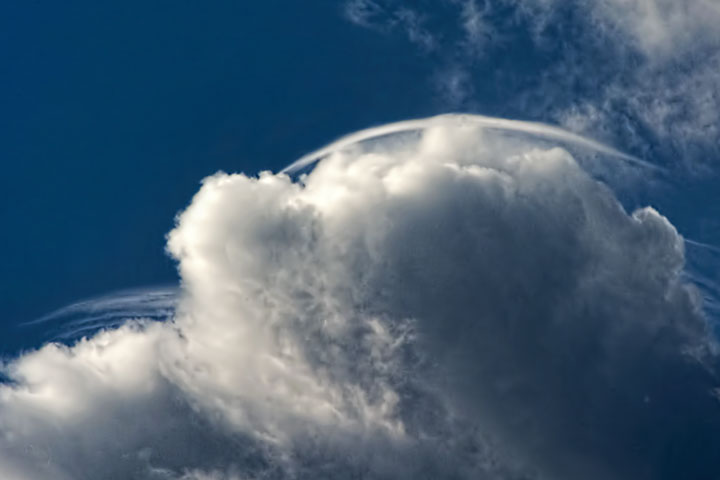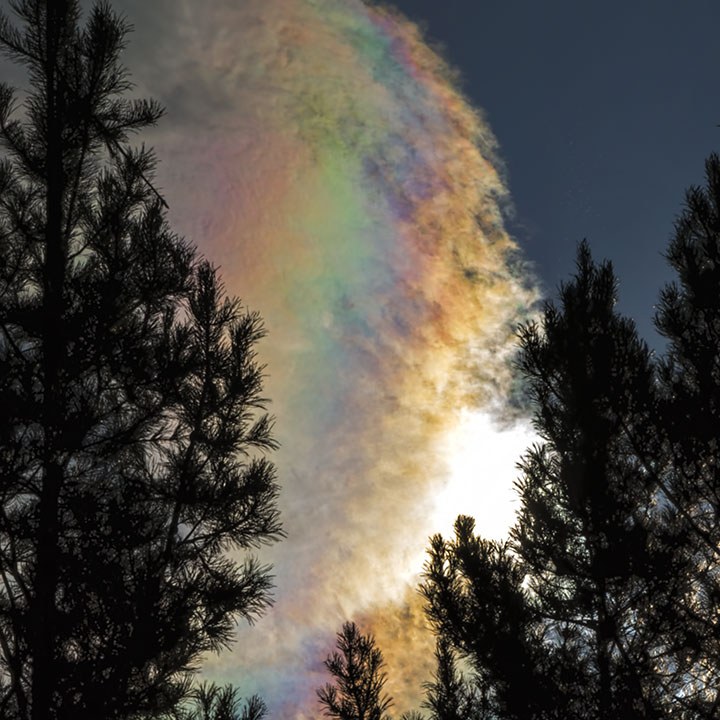For the last week I have delighted in the adornments accompanying mountain waves.
Just as a moving boat will leave waves in its wake, so too can a mountain—although in this case, the air moves, not the mountain. Unlike a boat’s wake, waves in the lee of a mountain are not a feature of every wind blowing across it: the atmosphere must be statically stable and the wind must increase with height. At such times, undulations in the atmosphere can substantially outdo a tsunami in amplitude—albeit in a more etherial medium. Such waves are most common in the winter, alas a time when stratus often inhibits the view from valleys.
A smooth, often featureless, wave cloud forms on the crest of mountain waves when the air is sufficiently moist. As air ascends to the crest of the wave, vapour cools and condenses to form a cloud. Cloud droplets quickly evaporate on the descending side of the crest, leaving the cloud hanging in one spot as the wind whistles through it. The wave cloud is also called a lenticular cloud owing to its resemblance to the lentil seed (after which optical lenses are also named).

Curiously, a mountain is not always needed for such a cloud to form; a cumulus cloud will sometimes serve as a mountain and present sufficient displacement of the wind that a wave cloud will form over it. This cloud is called a pileus—literally, a cap. The cumulus often grows right through the pileus and destroys it.

The wave cloud is not always featureless. Depending upon the wind and temperature structure in the wave, smaller-scale rollers, called billows, may form within it.

One of the grandest wave-cloud embellishments is iridescence. The colours can be seen in thin wave clouds near the Sun’s direction. Unfortunately, the colours are so dazzlingly bright that they are rarely noticed, despite their beauty.

